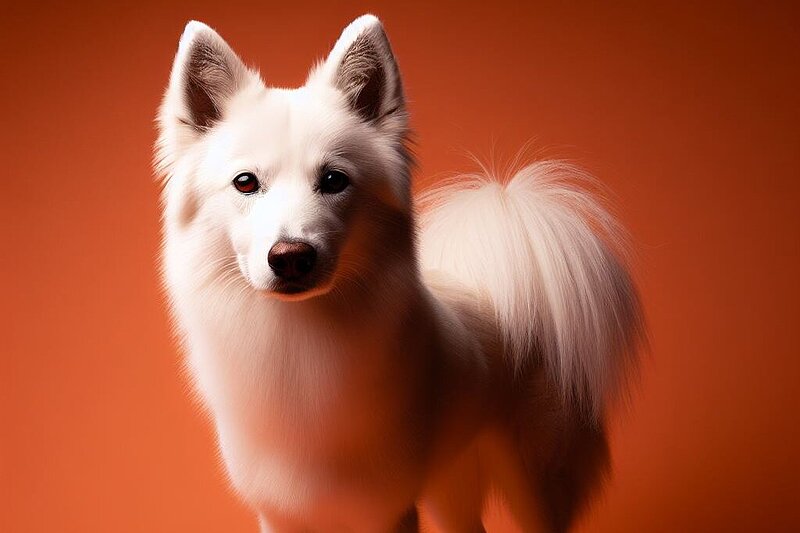The Japanese Spitz: The charming companion with the snow-white fur
Origin and history of the Japanese Spitz
The Japanese Spitz was created by crossing various small Spitz breeds from Europe. In the 1920s, white Spitz dogs were imported to Japan and breeders began to mate these dogs to emphasize the best characteristics. After several years of selective breeding, the Japanese Spitz was officially recognized in the 1950s. Today, it is valued not only in Japan but also internationally as a loyal and loving companion.
Who is the Japanese Spitz suitable for?
The Japanese Spitz is an ideal dog for families, individuals and older people. Thanks to its friendly and outgoing nature, it is a great companion for children and gets on well with other pets. Its adaptability also makes it suitable for city life as long as it gets enough exercise and mental stimulation.
Character of the Japanese Spitz
The Japanese Spitz is known for its lively and cheerful personality. It is intelligent, eager to learn and often easy to train. These dogs are alert without being overly barky and love to spend time with their humans. They are loyal companions and often show a strong bond with their owners.
Appearance of the Japanese Spitz
The Japanese Spitz has a striking, snow-white coat that makes it instantly recognizable. Its almond-shaped, dark eyes and small, erect ears give it a watchful and friendly expression. He has an elegant but strong build and a bushy tail that is carried over his back. Males reach a shoulder height of around 30 to 38 cm and a weight of 5 to 10 kg, while females are somewhat smaller and lighter.
Care of the Japanese Spitz
Grooming the Japanese Spitz is relatively straightforward, although its long, white coat requires regular attention. Weekly brushing helps to keep the coat clean and tangle-free. During the shedding season in spring and fall, daily brushing is recommended to remove loose hairs. In addition, the teeth should be brushed regularly and the ears checked for cleanliness.
Health of the Japanese Spitz
The Japanese Spitz is generally a healthy and robust dog breed. With an average life expectancy of 12 to 16 years, these dogs can lead a long and happy life. There are few breed-specific health issues, but as with all dogs, it is important to watch for hip dysplasia and eye problems and schedule regular vet visits.
Exercise and training
The Japanese Spitz is an active breed that needs regular exercise, but does not require an excessive amount of training. Daily walks and playtime are enough to keep him happy and healthy. He is well suited to city life as long as he gets enough exercise and mental stimulation. Dog sports such as agility or obedience training can provide him with additional challenges and fun.
Behavior and interaction
Japanese Spitz are friendly and social dogs that get along well with children and other pets. They are playful and affectionate and enjoy being part of the family. Their alertness makes them good watchdogs without excessive barking.
FCI recognition and other
The Japanese Spitz is recognized by the Fédération Cynologique Internationale (FCI) and classified in Group 5 (Spitz and primitive type dogs). This recognition underlines the purity and breeding standards of this charming breed.
